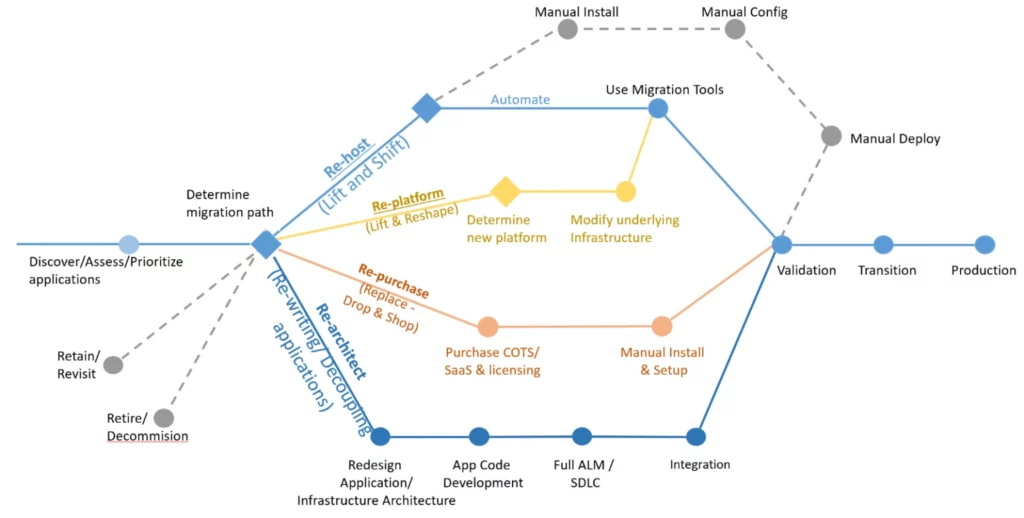A cloud migration strategy provides the framework to help your organization move data and applications from on-premises architecture to the cloud. Learn more about the advantages of migrating. Not all workloads are created equal. There are several migration strategies to help transition your legacy application, known as the six Rs. The “best” option is based on each business’s unique needs. Find the optimal strategy for your organization by evaluating each strategy based on time, budget and functionality.

1. Rehost
The strategy known as lift and shift (L&S) is the fastest approach to moving an existing application to the public cloud. L&S requires creating virtual instances of existing servers. Most providers offer tools that automate some of this. The application logic remains unchanged and the storage and processing locations move so there is minimal impact on a companies staff. This approach enables a business to eliminate its own data centers, but keep most other IT-related tasks.
2. Re-platform
Re-platforming involves replacing some of an application’s functionality with public cloud services. It requires an in-depth decomposition of an application.
Decomposition involves first looking closely at the use cases and workflow-enabled by an application, then identifying functionality that could be extracted and hosted elsewhere, then finally rewriting the logic that calls this functionality to use the loosely coupled services offered by the provider. This approach retains core business rules, functionality and competitive advantage with the business while offloading generic services development and maintenance to the provider. It also takes advantage of economies of scale to continually grow and improve these core services, usually at no cost to the business.
Revision or application modernization is the preferred approach for businesses. This is because they can reap the benefits of replacing homegrown functionality with services provided by cloud providers. Replacing built-in authentication and authorization with cloud-based OAuth or Cognito that includes single sign-on and multi-factor authentication is an ideal scenario.
A huge advantage to revision is keeping an existing application running either on-premises or via L&S, while opportunistically moving functions one at a time to their cloud-based equivalent.
3. Refactor / Rebuild
Architecting for the cloud is the preferred option for businesses looking to rebuild or build new applications. The loose coupling and specific services that the cloud offers can be taken advantage of through various solutions designs. This poses an advantage to the very long time to build in-house. However, this strategy takes the longest, and has more up-front costs, but at the same time ensures your downstream business is more finely tuned to run on the public cloud — meaning high availability and elasticity. This involves rethinking the design of your existing application to take advantage of the features and services offered by the public cloud.
4. Repurchase
In order to utilize the repurchase strategy, an individual must replace their existing application with a COTS application whose design is for the public cloud. Examples of this are moving from a legacy accounting system to a cloud-based ERP system.
5. Retire
You may discover that usage of your existing application is overall very low. After conducting a thorough analysis, it may become apparent the best strategy for the application is to shut it down. It is not uncommon for businesses who have undergone multiple mergers to support many expensive applications that they never use. This is a great time to perform housekeeping.
6. Retain
Sometimes the best answer, for now, is to do nothing. Your business should retain the existing application and focus on solutions that better improve the core competencies.
These are the cloud concepts to keep in mind as we discuss migrating legacy apps to the public cloud.
Interesting in taking the next steps on your journey to the cloud? Get started with a FREE one-hour assessment today!


